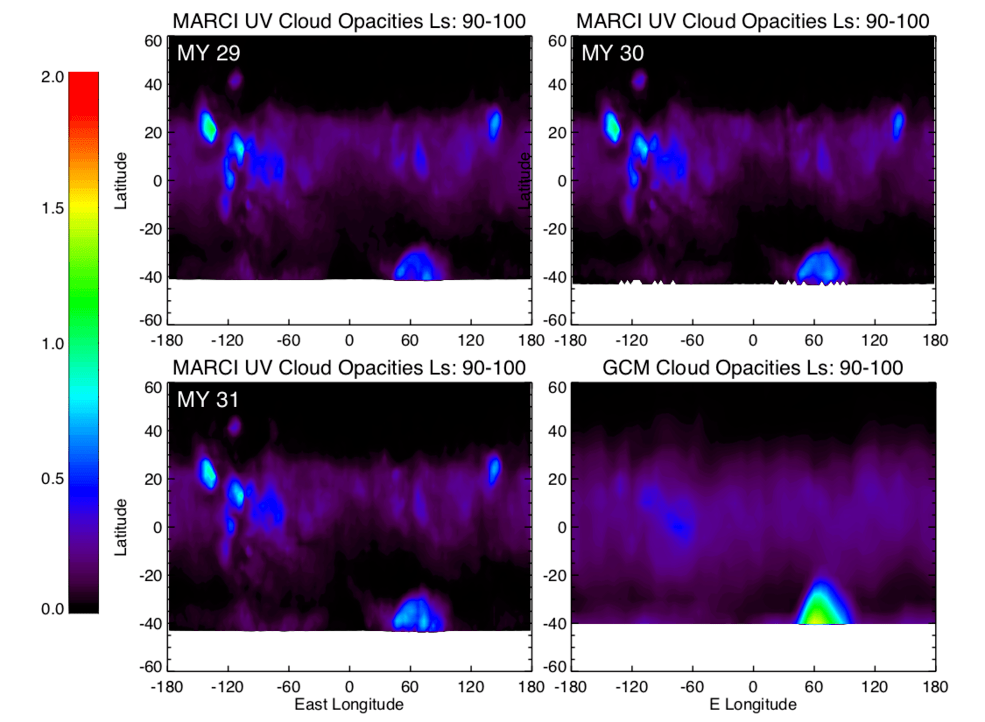Water Ice Clouds in Hellas Basin During Northern Hemisphere Summer
Water in the atmosphere of Mars moves between the northern and southern hemispheres seasonally, with north-to-south transport during northern hemisphere (NH) summer and south-to-north transport during southern hemisphere (SH) summer. Understanding the processes that control this seasonal transport of water is critical for understanding the current climate of Mars. Because water ice clouds both track and influence atmospheric circulations on a range of spatial scales, investigations about when and why clouds form enhance our knowledge of the water cycle as a whole. We focus on a population of clouds that has recently been observed by the MARs Color Imager (MARCI) instrument on the Mars Reconnaissance Orbiter (MRO) to persist in the Hellas Basin throughout the majority of NH summer (Figure 1). We use the NASA/Ames Legacy Mars Global Climate Model (GCM) to investigate the dynamical mechanisms that control the formation and evolution of Hellas water ice clouds. The simulated water cycle includes sublimation from the north residual cap and the microphysical processes of nucleation, growth, and settling of radiatively active water ice clouds. We find that water is transported from the north polar residual cap southward across the equator and into the Hellas region primarily by stationary eddies at low levels. Clouds form near the surface in the basin as moist air mixes with cold polar air on the western side of Hellas and are subsequently transported clockwise around the north side of the basin by the low-level cyclonic circulation. This study highlights the importance of stationary eddies in the southward transport of water during NH summer on Mars.

























